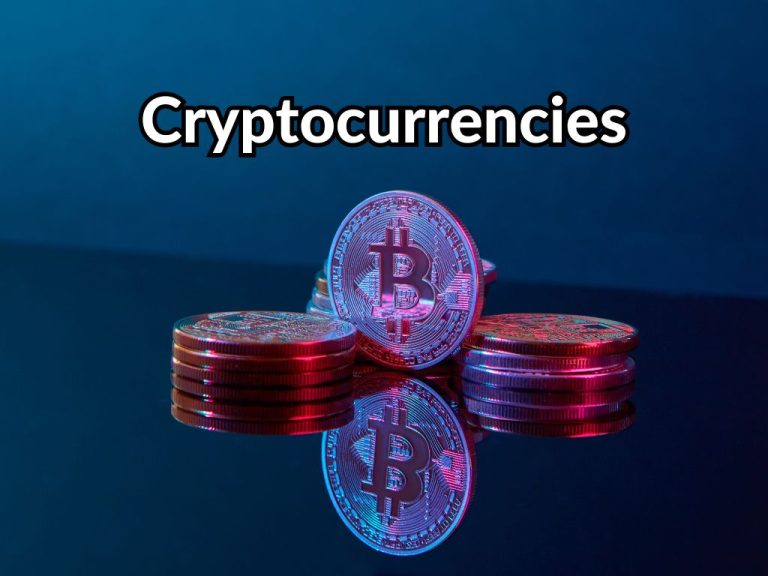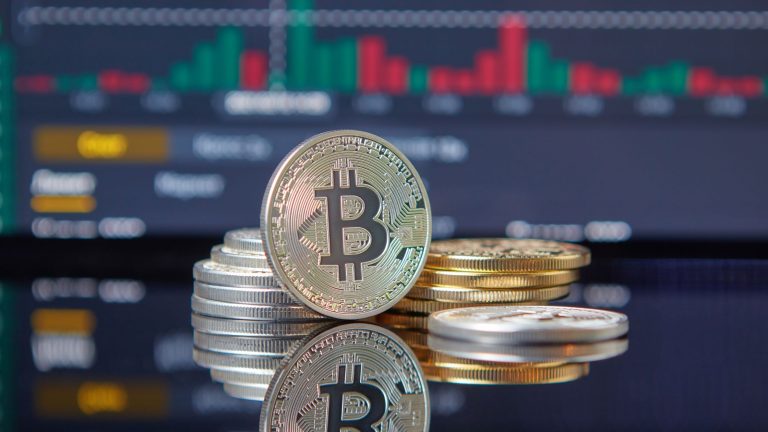Bitcoin may have started the movement, but the future of crypto is being shaped by something much bigger.
Today’s digital asset ecosystem extends far beyond coins and price speculation. Behind the scenes, new infrastructure is quietly transforming how people trade, govern, and collaborate in the crypto space. Peer-to-peer platforms are removing centralized control from exchanges, while decentralized autonomous organizations (DAOs) are shifting power away from traditional leadership models and putting it in the hands of token holders.
If you’ve only been tracking Bitcoin or Ethereum, you’re seeing just one piece of the picture. Understanding platforms like LocalBitcoins, BitDAO, and the Bit Token is key to grasping where this technology is truly headed. These are the systems driving crypto’s next phase not just through innovation, but through decentralization, community governance, and global accessibility.
This guide breaks down what these platforms do, why they matter, and how they fit into the larger shift away from centralized control. Whether you’re exploring new ways to engage with the crypto ecosystem or simply expanding your understanding, this is where the next level begins.
Key Takeaways
- LocalBitcoins pioneered peer-to-peer Bitcoin trading by allowing users to transact directly without relying on centralized exchanges.
- BitDAO is one of the largest decentralized autonomous organizations, funding open-source projects and innovations in decentralized finance (DeFi).
- The Bit Token (BIT) is a governance token that gives holders the power to vote on proposals, allocate funding, and influence the direction of BitDAO.
- Understanding the difference between BitDAO as a project and the Bit Token as a governance asset is essential for anyone engaging with DAO ecosystems.
- These platforms highlight a broader trend in crypto: a shift toward decentralization, transparency, and community-led decision-making.

🌍 What Is LocalBitcoins And Is It Still Relevant?
Before crypto exchanges became sleek apps backed by billion-dollar companies, Bitcoin trading was raw, direct, and mostly peer-to-peer. LocalBitcoins was one of the first platforms to make that possible at scale.
Launched in 2012, LocalBitcoins allowed users to buy and sell Bitcoin directly with each other, often without intermediaries.
Unlike centralized platforms where the exchange controls the process, LocalBitcoins was built around individual listings, where buyers and sellers agreed on terms and chose their preferred payment methods.
For many early adopters especially in countries with limited financial access—LocalBitcoins wasn’t just an option; it was a lifeline.
But as crypto has matured, the question isn’t just what is LocalBitcoins? It’s whether it still matters today.
Peer-to-Peer Trading: Then vs. Now
LocalBitcoins offered something unique: flexibility. Users could trade using bank transfers, PayPal, even cash across more than 190 countries. It was fast, relatively private, and often more accessible than traditional exchanges.
However, as regulations tightened and fraud risks increased, the platform became harder to use for many. Identity verification became mandatory. Listings shrank. And newer options emerged.
Today, LocalBitcoins is still active but its dominance has faded.
Many users now prefer:
- Paxful, which offers similar P2P trading but supports a wider range of fiat currencies
- Binance P2P, which combines peer-to-peer functionality with centralized platform support
- Traditional custodial exchanges that offer speed, insurance, and simplified interfaces
Should Beginners Use LocalBitcoins?
While the idea of trading directly with another person sounds empowering, it comes with real risk especially for newcomers. Every transaction requires trust, reputation checks, and a clear understanding of how to avoid scams.
If you’re new to peer-to-peer trading, make sure you:
- Always use escrow features
- Never agree to deals outside the platform
- Protect your funds with a secure crypto wallet (see our Wallet Security Guide)
LocalBitcoins helped shape the early crypto movement. But today, it’s best suited for experienced users or those with limited access to centralized platforms.
🧠 What Is BitDAO and How Does It Work?
As crypto evolves, one of its most powerful concepts is quietly changing how decisions are made: the DAO, or Decentralized Autonomous Organization.
A DAO replaces traditional leadership structures like CEOs or boards with rules encoded in smart contracts and decisions made by a community of token holders.
Instead of a small group controlling direction and funding, everyone with voting power helps shape the platform’s future.
BitDAO is one of the most ambitious projects built on this model.
What BitDAO Does
BitDAO is a community-led organization that funds open finance projects, particularly in the decentralized finance (DeFi) space. Rather than building products itself, BitDAO acts as a treasury and governance layer, supporting the builders, tools, and ecosystems pushing crypto forward.
Its mission is simple: accelerate the growth of a decentralized economy by allocating resources to projects that align with its values.
Key areas of focus include:
- DeFi protocols and liquidity tools
- Web3 infrastructure
- Governance research and experimentation
Unlike venture capital firms, BitDAO’s funding decisions aren’t made in boardrooms—they’re voted on by token holders using a transparent, on-chain process.
How Governance Works
Anyone who holds the platform’s governance token Bit Token (BIT) can submit or vote on proposals. These might include:
- Funding a new DeFi startup
- Partnering with other DAOs or protocols
- Adjusting the allocation of treasury resources
BitDAO’s treasury holds billions in assets, giving it the power to significantly influence the direction of DeFi if its community chooses to act.
This structure offers a radical alternative to traditional finance. It invites anyone with a stake to contribute to the strategy, not just the product.
BitDAO in Context
DAOs like BitDAO are part of a broader shift away from centralized gatekeepers. They’re experimental by nature and not without risk but they represent a future where users don’t just participate in platforms… they shape them.
Want a deeper dive into how DAOs and blockchain governance work? Explore our Beginner’s Guide to Blockchain.
🪙 Bit Token (BIT): Use Cases, Governance, and Utility
BitDAO’s power doesn’t come from a centralized leadership team, it comes from its token holders. At the core of that system is the Bit Token (BIT), the governance asset that gives users a voice.
Owning Bit Tokens doesn’t just mean holding a digital asset. It means having the ability to influence real decisions about where capital flows, which projects get funded, and how the BitDAO treasury evolves.
What Bit Token Is Used For
The Bit Token is primarily a governance token. It allows holders to:
- Vote on proposals, partnerships, and funding initiatives
- Suggest new strategies for ecosystem growth
- Participate in the long-term direction of BitDAO
This governance model makes Bit Token more than just a utility token. It acts like a digital voting share in one of the largest decentralized treasuries in crypto.
Beyond Voting: Staking and Ecosystem Participation
Some platforms that integrate with BitDAO also offer opportunities to stake BIT tokens. While staking can generate rewards, it also involves risks, including lock-up periods, liquidity limitations, and smart contract vulnerabilities.
That’s why anyone participating in staking should understand the trade-offs clearly, not just the reward potential.
A Different Kind of Involvement
Participating in BitDAO through the Bit Token doesn’t require coding skills or financial expertise, it simply requires ownership and intention.
Whether you want to cast votes, monitor proposals, or observe how decentralized governance plays out in real time, holding BIT lets you do that from day one.
As the DeFi ecosystem grows, tokens like BIT are increasingly becoming a way to collaborate, not just speculate.

⚖️ BitDAO vs. Bit Token: What’s the Difference?
It’s common to hear the terms BitDAO and Bit Token (BIT) used interchangeably but they aren’t the same thing.
BitDAO is the platform.
It’s the decentralized organization. The mission. The treasury. The system that funds and governs crypto innovation.
Bit Token is the key.
It’s the governance token. The voting tool. The asset that gives individuals the power to influence what BitDAO does next.
In simple terms:
BitDAO is the engine.
Bit Token is the steering wheel.
Understanding the difference matters especially if you’re planning to participate in votes, track proposals, or evaluate a DAO’s impact.
If you hold Bit Tokens, you’re not just speculating on a coin, you’re holding a stake in a treasury-backed governance system. That gives you more responsibility… and more reason to stay informed.

📈 What Drives the Bit Token Price?
While the Bit Token (BIT) was designed for governance, like any tradable crypto asset, it also has a market value. And that value is influenced by a mix of utility, activity, and sentiment.
Here’s what typically affects the price of tokens like BIT:
1. Ecosystem Activity
The more active BitDAO is funding projects, forming partnerships, expanding its treasury, the more visible and relevant BIT becomes. Increased on-chain governance activity can drive demand as more users seek to participate.
2. Utility and Governance Participation
If holding BIT gives users real, valuable voting power, demand may rise. The clearer the connection between governance and real-world influence, the more compelling the token becomes.
3. Partnerships and Integrations
Collaborations with high-profile protocols (like zkSync, SushiSwap, or Layer 2 solutions) often draw attention to BitDAO. These partnerships can signal strength and utility, affecting perception and use.
4. Market Sentiment
Like all cryptocurrencies, BIT is still subject to broader market cycles. Bullish or bearish momentum in the DeFi space or in crypto generally can move its price, regardless of fundamentals.
Track BIT Responsibly
Instead of guessing price movements, use tools to monitor the token’s fundamentals and governance metrics:
Snapshot.org for DAO proposals and voting history
Our Crypto Tools Hub for curated platforms that support smarter analysis
Governance tokens like BIT reflect more than just market speculation. They represent influence, direction, and access to decision-making power in decentralized communities.
Whether the price rises or falls, the value of participation remains.

❓ Frequently Asked Questions
What is the difference between BitDAO and Bit Token?
BitDAO is the decentralized platform that funds crypto projects and governs a large treasury. Bit Token (BIT) is the governance token used by holders to vote on proposals and influence the direction of BitDAO.
Is LocalBitcoins still a safe platform to use?
LocalBitcoins can still be used safely, but it requires caution. Always use the platform’s escrow system, verify the reputation of trading partners, and avoid transactions outside the official interface. For newer users, regulated exchanges or hybrid platforms may offer more protection.
What can I do with Bit Tokens besides holding them?
Bit Tokens give you voting power in BitDAO. You can participate in governance proposals, help decide where treasury funds go, and—in some cases—stake your tokens on integrated platforms. Always research the risks before participating in any staking system.
How does BitDAO make funding decisions?
BitDAO uses a community voting system. Anyone holding Bit Tokens can vote on funding proposals submitted to the platform. The more tokens you hold, the more influence you have on treasury allocation decisions.
Can I still use LocalBitcoins if I’m new to crypto?
Technically yes—but it’s not the most beginner-friendly platform. P2P trading involves risks and requires strong personal security practices. Beginners may prefer exchanges with more user protection and clearer interfaces.
Where can I track the price and activity of Bit Token?
You can monitor Bit Token on platforms like CoinMarketCap and CoinGecko. For governance activity and voting history, visit Snapshot.org. To explore more crypto tools, check out our Crypto Tools Hub.

🧩 Final Thoughts: Understanding the Real Shift Behind the Tokens
Platforms like LocalBitcoins, BitDAO, and the Bit Token represent something bigger than individual tools, they reflect a deeper shift in crypto itself.
From direct peer-to-peer trading to decentralized governance, we’re watching the foundations of finance, collaboration, and ownership evolve in real time. But navigating that shift takes more than enthusiasm. It takes understanding.
If you’re exploring crypto beyond surface-level hype, these platforms are where the real learning begins. Whether you’re curious about DAO participation, decentralized funding models, or how P2P trading fits into a global system, the takeaway is simple:
The future of crypto isn’t just coins. It’s infrastructure, it’s governance and control in the hands of users.
Next: check out our Blockchain Technology Guide.
Disclaimer: This blog post is for informational purposes only and should not be considered financial advice. I am not a licensed financial advisor, and you should always do your own research or consult a professional before making any financial decisions. Cryptocurrencies are volatile and involve significant risk of loss. Past performance is not indicative of future results.


1 thought on “Beyond Bitcoin: BitDAO, Bit Token, and Local Bitcoins Explained”